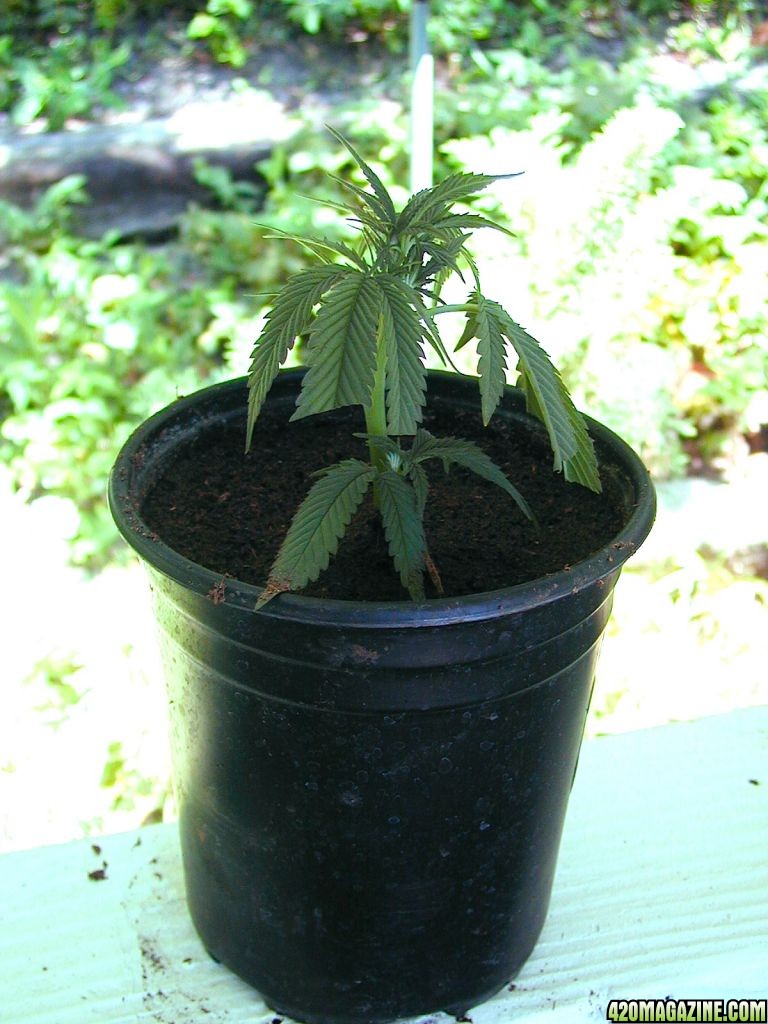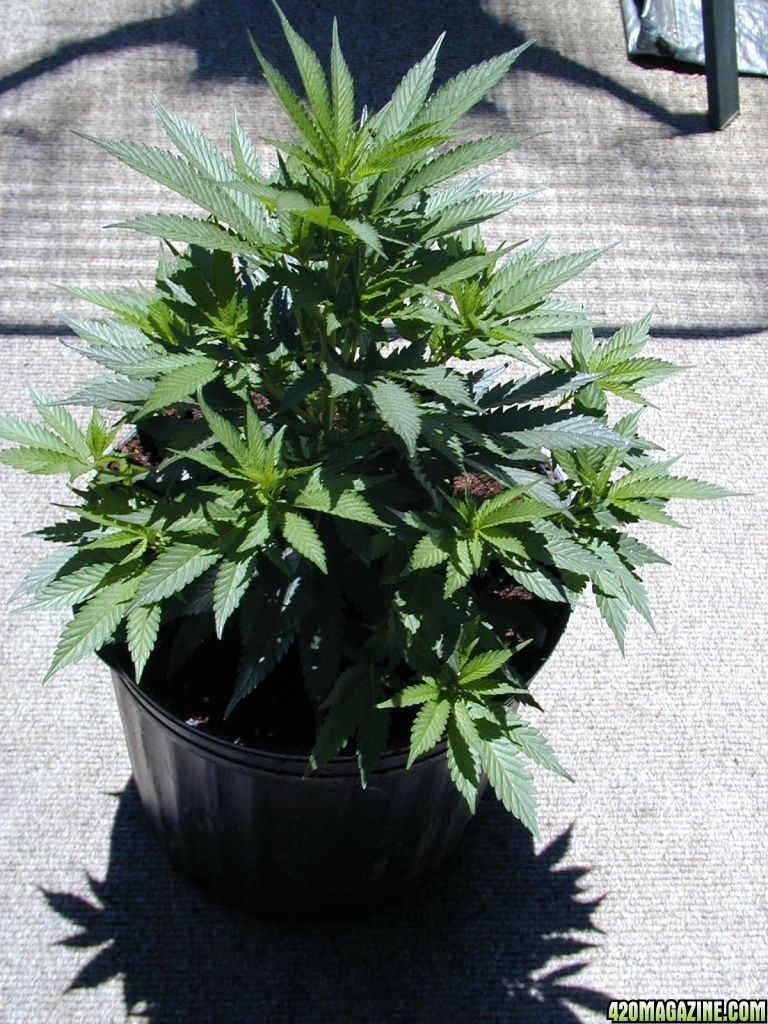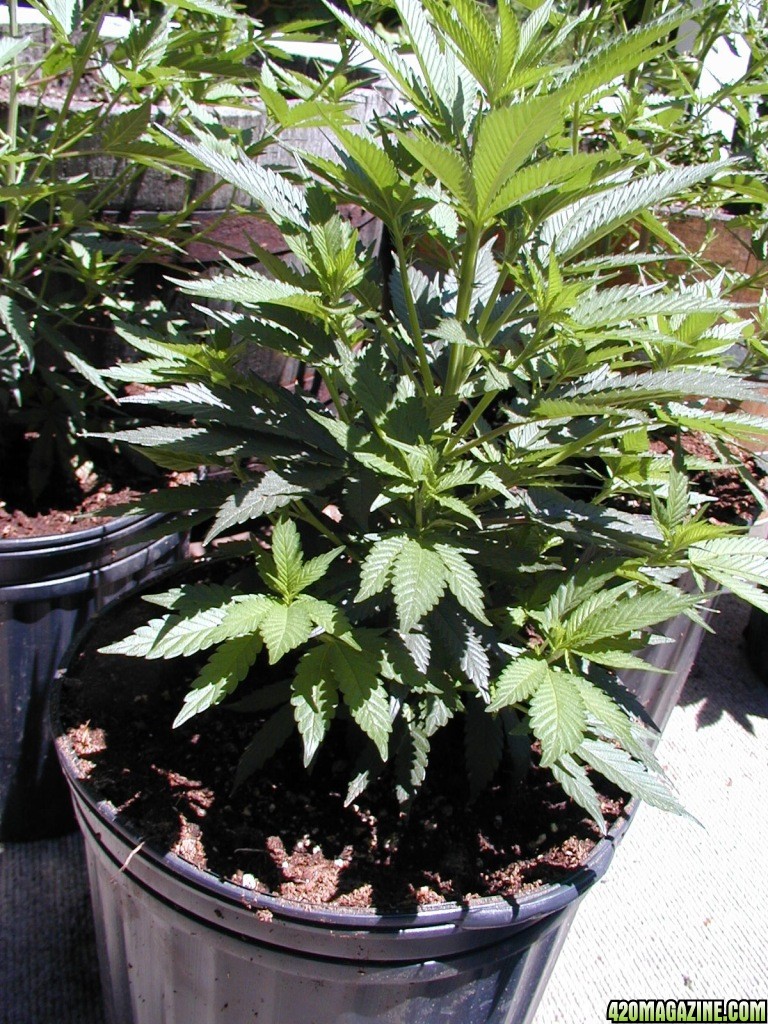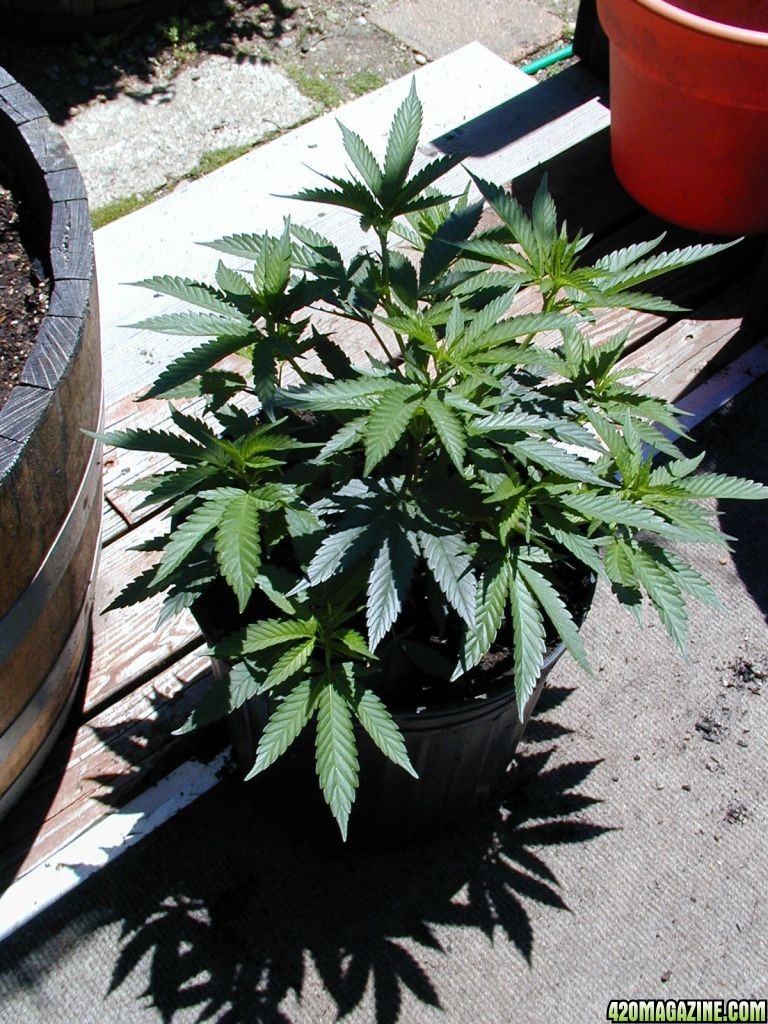Hi everyone,
Is there a size limit to successful cloning when using a cloning machine like an EZ Cloner or Turbo Kloner? Can you root cuttings larger than what would be considered typical, with a stem diameter approaching that of a Pencil or Chop Stick?
Some background...
If you have read my grow journal recently, then you already know that I am getting ready to start my first cloning session using my new Turbo Klone T48 cloning machine.
The cuttings will be taken from my two original Blueberry clones that are just about to turn 2 months old. The plants are currently 29" and 27" tall respectively from the base of the main stalk to the top of the growing tip. I have been inspecting them over the last few days looking for some potential cutting locations and all of the branches have rather hefty stems and to get three nodes in a cutting I will end up with clones that are in the 8-9" long range.
Only tried working with something this large just recently when I was able to clone the growing tip from one of these two plants taken about 10 days ago. This was before I had the machine, so I used a 1.5 inch Rockwool cube and the conventional cloning proceedure. I confirmed root buds on this one four days ago and transplanted it into soil, removing it from the Rockwool cube because there were only buds starting at that point, no actual roots.
The clone is now surviving without a humidity dome, although not quite rooted enough to stand direct sun and an 80-90 degree summer day. Very close though, but it has taken a VERY LONG TIME! I would like to avoid a whole batch of clones that take this long to root.
I would like to avoid a whole batch of clones that take this long to root.
Blueberry Growing Tip Clone Almost Completely Rooted in Soil

Here are a few recent photos of the mother plants:


The donor of the growing tip clone

My goal is to take 12-15 cuttings total from these two plants, but as I said, all of the branches are pretty stout with nearly pencil thick stems and to get three nodes, I am looking at an average of 8" long. I don't foresee these plants creating any smaller and thinner branches anytime soon, so this is what I will have to work with for the foreseeable future. I plan to put both of them into my "Bloom Room" to flower as soon as they both hit about 39" tall.
I would especially be interested in hearing from experienced Blueberry strain growers since this will probably sound a lot more familiar to them than to those who are growing the more typical strains.
Any problems trying to root a dozen or so of these larger specimens that are very likely to have hollow main stems more like a growing tip than a typical side branch cutting?
Thanks in advance everyone!
Is there a size limit to successful cloning when using a cloning machine like an EZ Cloner or Turbo Kloner? Can you root cuttings larger than what would be considered typical, with a stem diameter approaching that of a Pencil or Chop Stick?
Some background...
If you have read my grow journal recently, then you already know that I am getting ready to start my first cloning session using my new Turbo Klone T48 cloning machine.
The cuttings will be taken from my two original Blueberry clones that are just about to turn 2 months old. The plants are currently 29" and 27" tall respectively from the base of the main stalk to the top of the growing tip. I have been inspecting them over the last few days looking for some potential cutting locations and all of the branches have rather hefty stems and to get three nodes in a cutting I will end up with clones that are in the 8-9" long range.
Only tried working with something this large just recently when I was able to clone the growing tip from one of these two plants taken about 10 days ago. This was before I had the machine, so I used a 1.5 inch Rockwool cube and the conventional cloning proceedure. I confirmed root buds on this one four days ago and transplanted it into soil, removing it from the Rockwool cube because there were only buds starting at that point, no actual roots.
The clone is now surviving without a humidity dome, although not quite rooted enough to stand direct sun and an 80-90 degree summer day. Very close though, but it has taken a VERY LONG TIME!
 I would like to avoid a whole batch of clones that take this long to root.
I would like to avoid a whole batch of clones that take this long to root.Blueberry Growing Tip Clone Almost Completely Rooted in Soil
Here are a few recent photos of the mother plants:

The donor of the growing tip clone
My goal is to take 12-15 cuttings total from these two plants, but as I said, all of the branches are pretty stout with nearly pencil thick stems and to get three nodes, I am looking at an average of 8" long. I don't foresee these plants creating any smaller and thinner branches anytime soon, so this is what I will have to work with for the foreseeable future. I plan to put both of them into my "Bloom Room" to flower as soon as they both hit about 39" tall.
I would especially be interested in hearing from experienced Blueberry strain growers since this will probably sound a lot more familiar to them than to those who are growing the more typical strains.

Any problems trying to root a dozen or so of these larger specimens that are very likely to have hollow main stems more like a growing tip than a typical side branch cutting?
Thanks in advance everyone!







